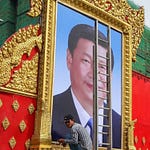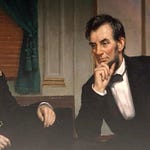It is the spring of 1874 in Paris—April 15th.
On Boulevard des Capucines, a studio associated with Nadar, a man named Nadar, is opening an exhibit of paintings by men who don't have an organizing principle yet. They call themselves Société anonyme. They are Degas, Monet, Pissarro, Renoir, Sisily, Cezanne—and especially Manet.
They gather to show off their paintings quite outside the accepted way to do this at an enterprise called the Salon. I stop there and turn to the man who introduced me to all of these intricacies, Sebastian Smee. His new book is Paris in Ruins: Love, War, and the Birth of Impressionism.
These are parallel universes. The politics of France in the middle of the 19th century, as America is recovering from the civil war, are as violent and unending as anything that can be seen in all of Europe and in America.
At the same time, these painters, who are now all extremely world famous, are living their lives under the guns all the time. But this meeting in 1874 is their way of moving towards the future.
To the men who gathered there, and one woman in particular, Berthe Morisot—what was their ambition? Why did they set up their own show, knowing that they were outside the accepted way of making money or being successful?
Watch the full interview above, or listen to an audio version below:
All images are Public Domain and sourced from The Metropolitan Museum of Art collection unless otherwise noted.
LINKS:
Paris in Ruins: Love, War, and the Birth of Impressionism by Sebastian Smee on Amazon
The opinions expressed on this website and on The John Batchelor Show are those of John Batchelor and guests, and not those of CBS News.















Share this post